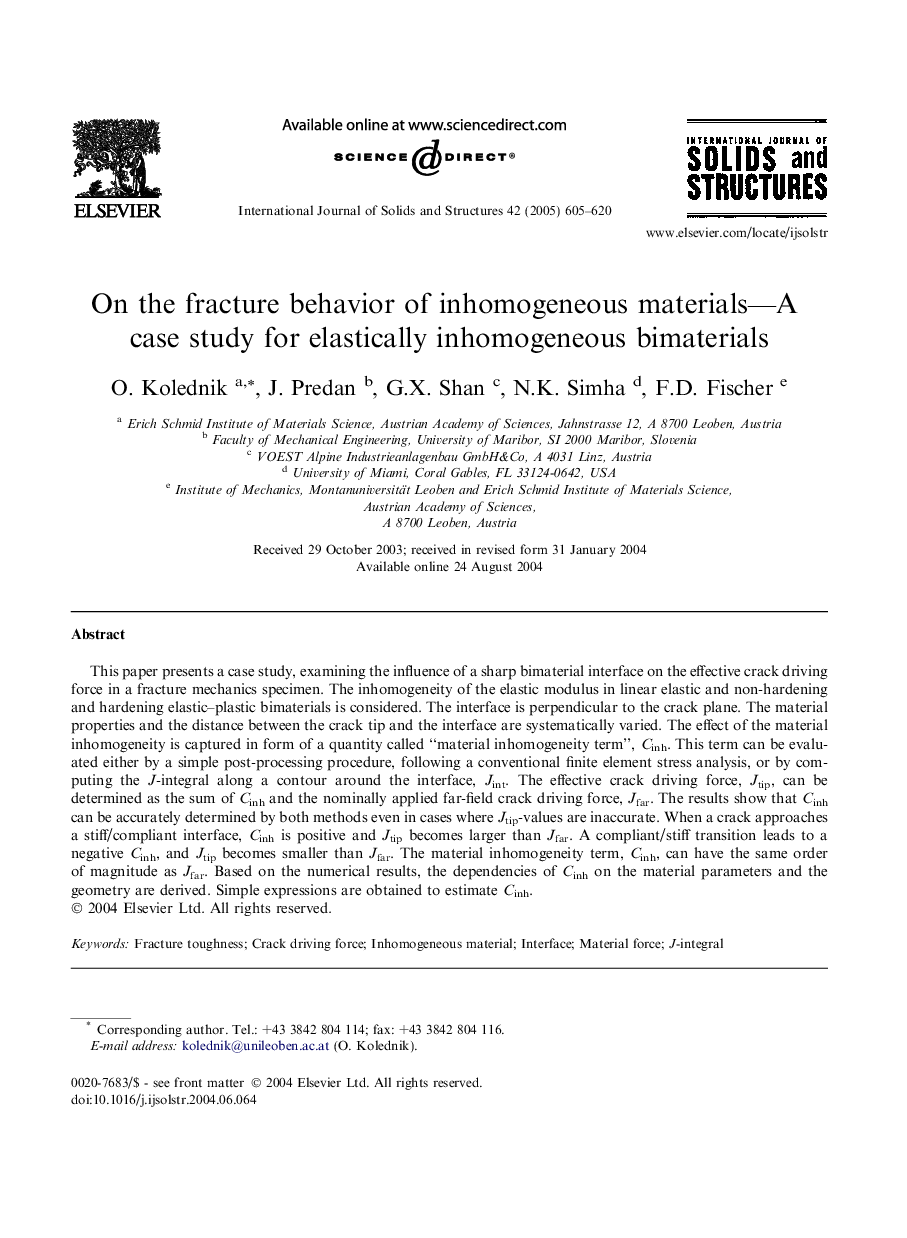| Article ID | Journal | Published Year | Pages | File Type |
|---|---|---|---|---|
| 9639770 | International Journal of Solids and Structures | 2005 | 16 Pages |
Abstract
This paper presents a case study, examining the influence of a sharp bimaterial interface on the effective crack driving force in a fracture mechanics specimen. The inhomogeneity of the elastic modulus in linear elastic and non-hardening and hardening elastic-plastic bimaterials is considered. The interface is perpendicular to the crack plane. The material properties and the distance between the crack tip and the interface are systematically varied. The effect of the material inhomogeneity is captured in form of a quantity called “material inhomogeneity term”, Cinh. This term can be evaluated either by a simple post-processing procedure, following a conventional finite element stress analysis, or by computing the J-integral along a contour around the interface, Jint. The effective crack driving force, Jtip, can be determined as the sum of Cinh and the nominally applied far-field crack driving force, Jfar. The results show that Cinh can be accurately determined by both methods even in cases where Jtip-values are inaccurate. When a crack approaches a stiff/compliant interface, Cinh is positive and Jtip becomes larger than Jfar. A compliant/stiff transition leads to a negative Cinh, and Jtip becomes smaller than Jfar. The material inhomogeneity term, Cinh, can have the same order of magnitude as Jfar. Based on the numerical results, the dependencies of Cinh on the material parameters and the geometry are derived. Simple expressions are obtained to estimate Cinh.
Keywords
Related Topics
Physical Sciences and Engineering
Engineering
Civil and Structural Engineering
Authors
O. Kolednik, J. Predan, G.X. Shan, N.K. Simha, F.D. Fischer,
